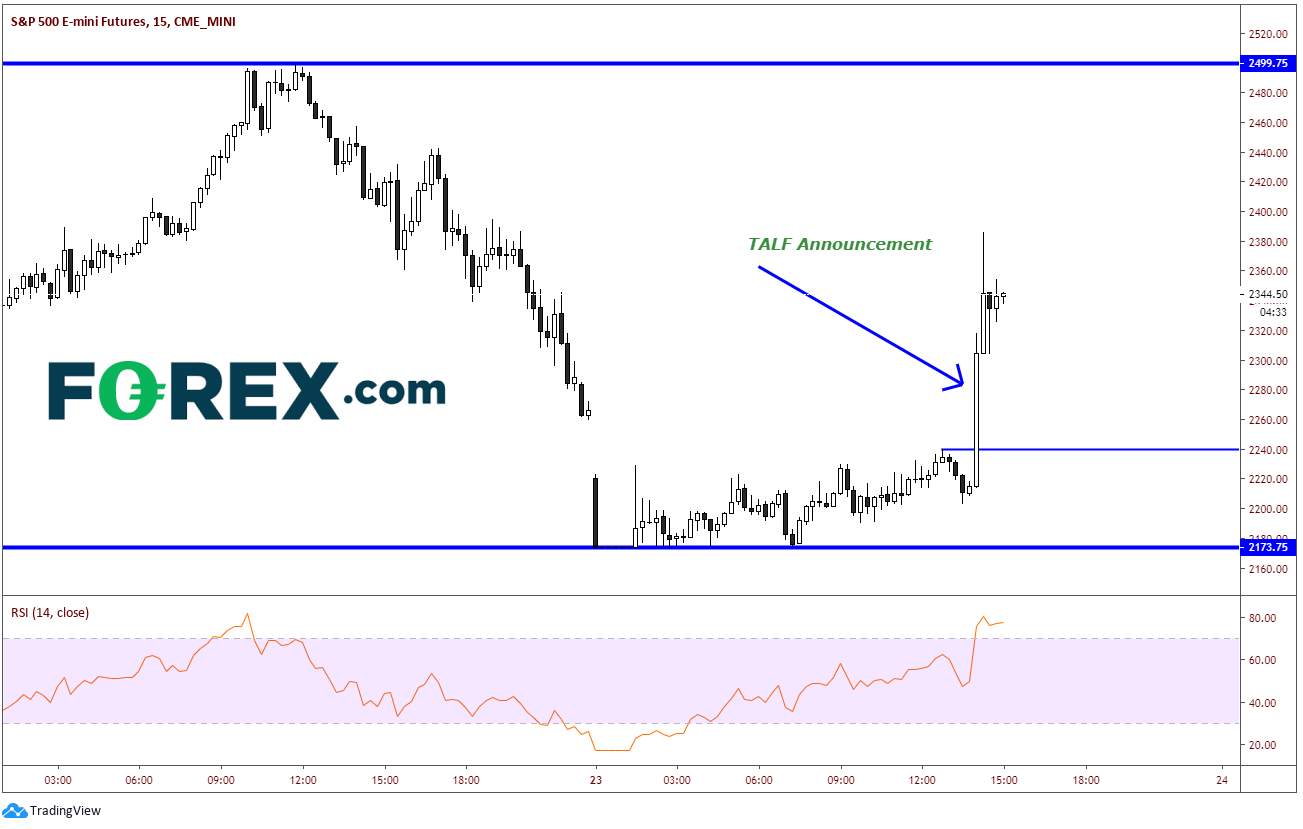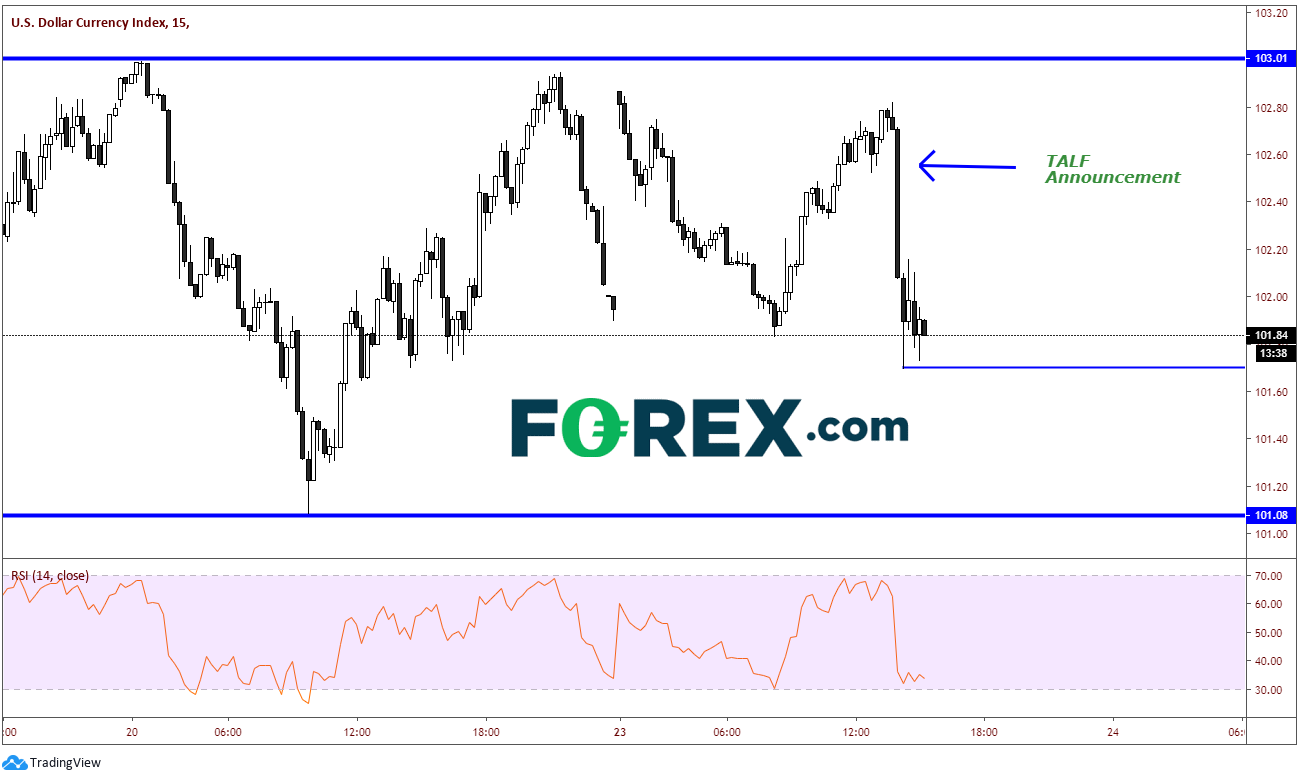Fed goes all in with an alphabet soup group of special purpose vehicles to shore up markets, reports Joe Perry.
The U.S. Federal Reserve has provided unprecedented stimulus to the U.S. markets so far, include slashing interest rates to 0%-25%, QE4, extending credit lines, and participating in the overnight commercial paper markets. Today, the Fed has announced Term Asset-Backed Securities Loan Facility (TALF).
TALF allows the Fed to buy UNLIMITED amounts of Treasuries and Mortgage securities. In addition, the Fed established, the Primary Market Corporate Credit Facility (PMCCF), and the Secondary Market Corporate Credit Facility (SMCCF). These programs allow the Fed to buy corporate and investment grade bonds in the secondary markets and some exchange traded funds (ETFs). These special purpose vehicles will allow the Fed to continue to ease corporate credit conditions. The vote was unanimous at the emergency meeting.
By the way, don’t forget that congress in trying to put together a fiscal package worth $2 trillion to help individuals, including providing cash directly to eligible individuals. There have been several votes so far, however none have passed both houses of Congress. There may be another vote later today.
Stocks shot higher after the TALF announcement, as markets are taking this effort by the Fed as the ultimate backstop for the economy. S&P 500 futures shot up from 2214 to 2386, 172 handles! If price breaks these highs, there is horizontal resistance near 2420 and then Friday’s highs near 2500. Overnight support at 2239.50 and the overnight lows near 2174.

Source: Tradingview, CME, FOREX.Com.
Watch the U.S. Dollar Index (DXY). The Fed is flooding system with U.S. dollars. Theoretically, more supply of U.S. Dollars should push the price of the DXY lower. Since the announcement, the DXY has moved from 102. 71 to 101.70. If the DXY does move higher, this will signal that the demand for U.S. Dollars is overwhelming the supply and the aggressive Fed measures may not be enough. There really isn’t any resistance until Friday’s highs near 103. First support is at Monday’s lows near 101.70. Support below that at Fridays lows of 101.09.

Source: Tradingview, FOREX.Com.
As governments continue to provide more and more stimulus to global economies it will be important to watch the reaction in the markets. The main question will be: Is it enough?
Global PMI’s should be Noteworthy
Preliminary Purchasing Managers’ Indexes (PMIs) will be released globally today. This will be the world’s first significant economic data since the Coronavirus has gone global. According to Investopedia, the PMI is an index of the prevailing direction of economic trends in the manufacturing and service sectors. A reading of above 50 represents an expansion and a PMI reading of under 50 indicates contraction.
Over the past month, the Coronavirus has wreaked havoc on many global economies, resulting in factory shutdowns, store closures and laid off workers. The flash PMIs will give us a look at how bad the economy has been since early March, when February’s numbers were finalized. Many countries were teetering around the 50 level before the pandemic. Now, many have likely fallen into contraction territory. Below are some of the more important expectations for tomorrow’s PMIs:
There is also a Composite number for the manufacturing and services together, however traders tend to pay closer attention to the manufacturing and services numbers separately.
What will the economic data mean for the markets? Any numbers that are better than expected would be a surprise. However, traders are likely to ignore any better numbers and look ahead to the final data due on April 1, expecting them to be revised lower. If the data is worse than expected, markets are likely to sell off.
Given that the data are released at different times throughout the day, we could see some extreme volatility. For example, if Australia’s data is weaker than expected, the Aussie dollar (AUD/USD) may head lower. However, later in the day if the U.S. data is worse than expected, we may see AUD/USD go bid. The level of volatility will depend on which country’s data is closer to consensus.
Obviously, this information must be taken in context of what else is happening during the day. However, this will be the most significant data for March that we have seen so far. Traders will be watching!
Joe Perry holds the Chartered Market Technician (CMT) designation and has 20 years of experience in the FX and commodities arenas. Perry uses a combination of technical, macro, and fundamental analysis to provide market insights. He traded spot market FX and commodity futures for 17 years at SAC Capital Advisors and Point 72 Asset Management. Don’t forget that you can now follow Forex.com’s research team on Twitter: http://twitter.com/FOREXcom and you can find more of FOREX.com’s research at https://www.forex.com/en-us/market-analysis/latest-research/.




















